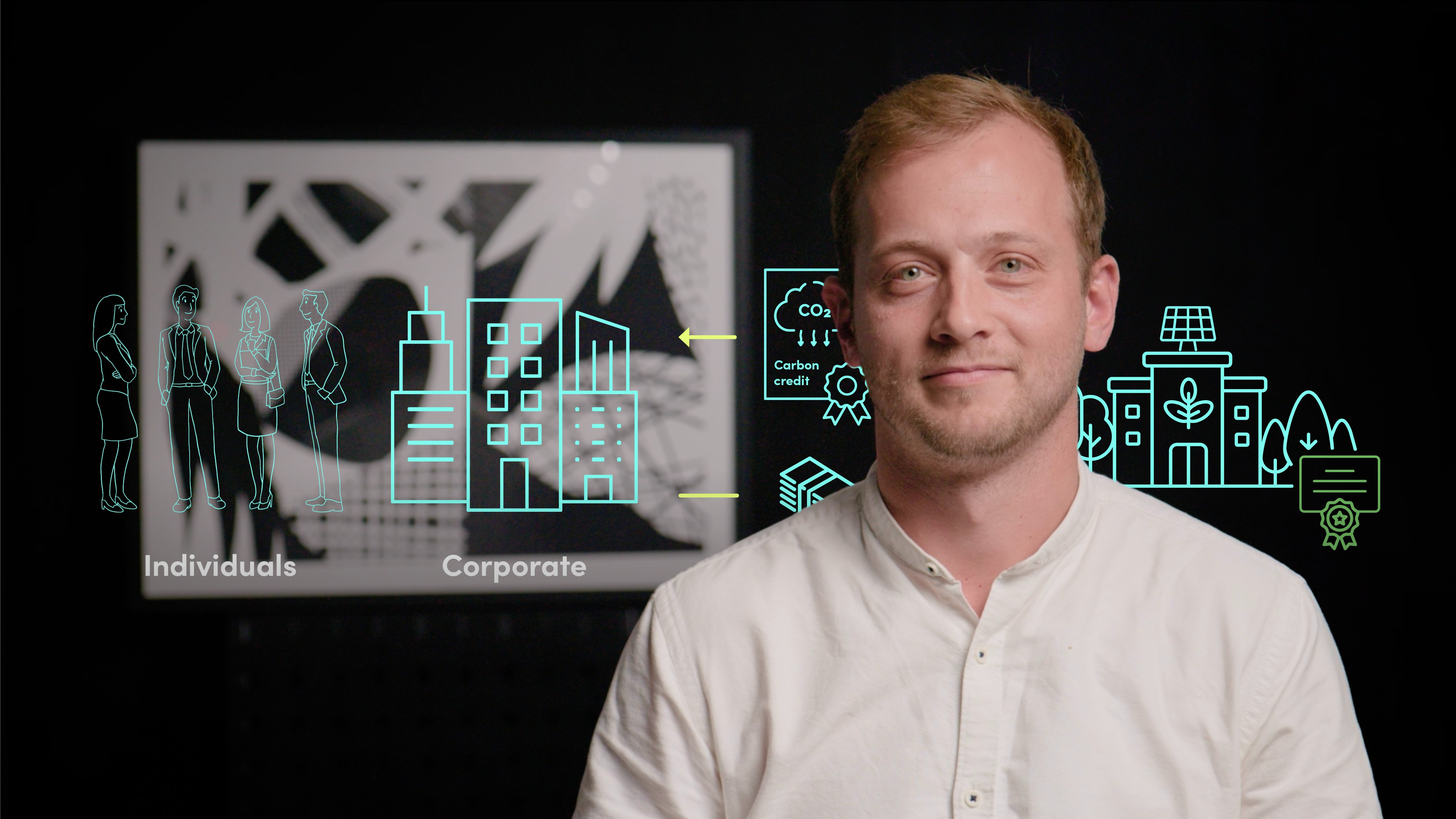
Achieving the Net Zero Pledge

Sam Hope
5 years: Carbon Markets
In this video, Sam Hope explains how businesses can engage with the voluntary carbon market (VCM) and why scaling it is essential for achieving net zero. Sam also discusses the steps for measuring a business's carbon footprint and the different ways that businesses can participate in the market.

In this video, Sam Hope explains how businesses can engage with the voluntary carbon market (VCM) and why scaling it is essential for achieving net zero. Sam also discusses the steps for measuring a business's carbon footprint and the different ways that businesses can participate in the market.
Subscribe to watch
Access this and all of the content on our platform by signing up for a 7-day free trial.

Achieving the Net Zero Pledge
13 mins 22 secs
Key learning objectives:
Understand the different types of carbon credits and projects
Outline the four claims and organisation can make upon purchasing credits
Understand why the VCM is crucial to achieve net zero
Understand how carbon credits can be used to offset emissions
Overview:
The voluntary carbon market (VCM) is a framework that allows businesses to invest in climate action through the purchase of carbon credits. The VCM is integral to our net zero efforts and businesses need to understand the complete process of engaging with the VCM. This is the only way in which we can achieve net zero objectives.
Subscribe to watch
Access this and all of the content on our platform by signing up for a 7-day free trial.
What is the first step in engaging with VCM?
The first step for any organisation looking to engage with the voluntary carbon market is to measure the greenhouse gas emissions they are responsible for. These emissions are categorised into 3 scopes
Scope 1 emissions - relate to fuel consumption and their subsequent direct atmospheric release (from the use of company vehicles or the heating of buildings)
Scope 2 emissions - related to the purchase of energy. For most businesses, this will be as simple as taking your annual electricity consumption and applying the national grid’s energy mix data to work out your scope 2 contribution.
Scope 3 emissions - Emissions generated by supply chain, both upstream and downstream. Scope 3 emissions have been broken into 15 internationally recognised categories. Unfortunately, most of your scope 3 emissions are difficult to gain accurate data for, given they are contributed by external actors in your supply chain. Scope 3 emissions can account for the vast majority of your footprint but are the hardest to abate.
How can an organisation target carbon reductions and mitigation in line with net zero using credits?
To achieve net zero globally by 2050, we need to be balancing the atmospheric emissions we generate with greenhouse gas removals. The scientific reports from the IPCC have given corporate guidance on emissions reduction pathways in line with the net zero by 2050 target.
- Scenario 1: Business as usual
- Scenario 2: Gradual reduction (5% year-on-year)
- Scenario 3: Sharp/Drastic reduction
Scenarios 2 and 3 fall in line with the 2 degrees Celsius warming target set by IPCC findings.
What are the requirements for an organisation to reach net zero?
- Measure its emissions fully across all three scopes
- Need to have reduced their carbon footprint by 90 to 95 percent compared to its baseline footprint
- Need to acquire carbon removal credits to compensate for its residual emissions.
How can an organisation offset its emissions using the VCM?
The voluntary carbon market (VCM) presents an opportunity to take accountability for residual emissions that we are unable to reduce. A carbon credit represents a tonne of carbon dioxide equivalent generated by a project which avoids or removes greenhouse gas emissions from the atmosphere. These can be purchased by individuals or businesses and retired to rebalance their emissions-related activities. However the credit can also be traded and transferred without being retired against their carbon footprint.
How can credits be bought and verified?
Buyers can purchase credits from brokers, retailers and directly from project developers to compensate for their emissions. These need to be verified by organisations such as the United Nations Clean Development Mechanism (UN CDM), the Gold Standard and Verra.
What are the types of carbon credits?
The taxonomy of carbon credits can be split most simply into either nature-based and technology-based. Nature-based projects contribute to protecting and developing our planet’s resources and its greatest carbon sinks. Technology-based projects protect the environment through technological developments. The project types within these two groups are then identified as either carbon avoidance or carbon removal credits.
What are carbon avoidance and carbon removal credits?
Carbon avoidance credits - Projects that have avoided or reduced emissions that would otherwise have occurred without carbon finance. This is the principle of additionality, one of the core carbon principles.
Carbon removal credits - Projects which capture atmospheric carbon dioxide and remove it from the carbon cycle.
What are co-benefits of projects?
Co-benefits - many offsetting projects also bring a range of additional benefits alongside the carbon benefits. When a project’s development fits the criteria to several UN SDGs, these are called co-benefits.
How will the VCM help in achieving net zero emissions?
VCM is the only mechanism capable of delivering atmospheric carbon removal in the scale needed to abate residual global emissions by 2050. We need to support the current project mix and developers working within the VCM. These projects protect existing emissions reductions and revenue generated by these developers will be re-invested into carbon removal projects. More companies offsetting carbon provides the market signals that will give us a better chance of achieving net zero in the long run.
What are the four claims an organisation can make after purchasing carbon credits?
- Carbon neutral
- Carbon positive
- Carbon negative
- Net zero
These are the four most commonly used carbon accountancy terms, with Carbon Neutral and Net zero being scientifically ratified.
Subscribe to watch
Access this and all of the content on our platform by signing up for a 7-day free trial.

Sam Hope
There are no available Videos from "Sam Hope"


























